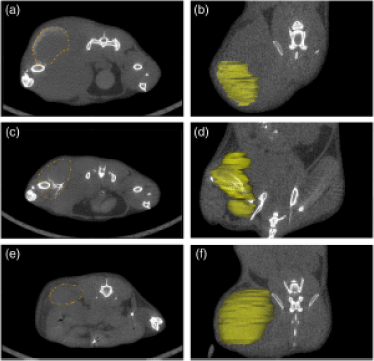Optimizing Immunoprecipitation with NanoPartz Gold Nanoparticles
Introduction
NanoPartz gold nanoparticles are revolutionizing immunoprecipitation assays, offering researchers a powerful tool to enhance protein isolation and detection. These nanoparticles, functionalized with specific antibodies, provide superior binding efficiency and sensitivity, making them ideal for isolating target proteins from complex biological samples like serum. Whether you’re studying protein interactions, signaling pathways, or disease markers, NanoPartz gold nanoparticles can significantly improve the accuracy and reliability of your results.

Image representing the process of using NanoPartz gold nanoparticles in an immunoprecipitation assay. The image shows how the gold nanoparticles functionalized with antibodies bind to target proteins in a serum sample, allowing for the separation of immune complexes. This illustration is designed to help visualize the use of these nanoparticles in enhancing immunoprecipitation assays.
What is Immunoprecipitation?
Immunoprecipitation (IP) is a widely used technique in molecular biology and biochemistry for isolating a specific protein from a complex mixture. This process relies on the specificity of an antibody to bind to its target protein, forming an antibody-protein complex that can be separated from the rest of the sample. The isolated proteins can then be analyzed using techniques like Western blotting, mass spectrometry, or enzymatic assays.
The Role of NanoPartz Gold Nanoparticles in Immunoprecipitation
1. Enhanced Protein Binding
NanoPartz gold nanoparticles are functionalized with antibodies that are specific to the target protein of interest. These antibodies bind to the protein, forming stable immune complexes. The high surface area of the nanoparticles allows for a greater number of antibodies to be attached, enhancing the binding capacity and improving the efficiency of protein isolation.
2. Improved Sensitivity
Gold nanoparticles have unique optical and electronic properties that can enhance the sensitivity of detection methods used after immunoprecipitation. This increased sensitivity is particularly beneficial in detecting low-abundance proteins or subtle changes in protein expression levels.
3. Compatibility with Multiple Detection Methods
NanoPartz gold nanoparticles are compatible with various detection methods, including Western blotting, ELISA, and mass spectrometry. This versatility makes them an excellent choice for researchers looking to streamline their workflow and obtain reliable, reproducible results across different experimental setups.
Applications in Research
- Protein Interaction Studies: By isolating protein complexes, researchers can study protein-protein interactions, revealing insights into signaling pathways and cellular mechanisms.
- Disease Marker Detection: Immunoprecipitation with gold nanoparticles can enhance the detection of disease markers, aiding in the development of diagnostic assays and therapeutic interventions.
- Post-Translational Modifications: The sensitivity of NanoPartz gold nanoparticles allows for the detection and analysis of post-translational modifications, such as phosphorylation or ubiquitination, providing a deeper understanding of protein regulation.
Reference List
-
Kozomara, S., & Ford, N. L. (2020). Detectability of fluorescent gold nanoparticles under micro-CT and optical projection tomography imaging. Journal of Medical Imaging, 7(2), 026002. https://doi.org/10.1117/1.JMI.7.2.026002
-
Smith, B. R., & Gambhir, S. S. (2017). Nanomaterials for In Vivo Imaging. Chemical Reviews, 117(19), 9018–9057. https://doi.org/10.1021/acs.chemrev.7b00064
-
Jain, P. K., Lee, K. S., El-Sayed, I. H., & El-Sayed, M. A. (2006). Calculated Absorption and Scattering Properties of Gold Nanoparticles of Different Size, Shape, and Composition: Applications in Biological Imaging and Biomedicine. The Journal of Physical Chemistry B, 110(14), 7238–7248. https://doi.org/10.1021/jp057170o
Why Choose NanoPartz Gold Nanoparticles?
- High Purity and Consistency: NanoPartz ensures the highest quality in their gold nanoparticles, providing consistent and reliable performance in immunoprecipitation assays.
- Customizable Functionalization: Whether you need nanoparticles functionalized with specific antibodies or ligands, NanoPartz offers tailored solutions to meet the exact needs of your research.
- Proven Results: Researchers across the globe trust NanoPartz gold nanoparticles for their exceptional performance in complex biological applications.
Conclusion
NanoPartz gold nanoparticles are setting a new standard in immunoprecipitation, offering enhanced sensitivity, binding efficiency, and compatibility with various detection methods. Whether you’re isolating proteins for research or diagnostic purposes, these nanoparticles will significantly elevate the quality and accuracy of your results.
Go here to purchase Nanopartz Fluorophore Labeled Gold Nanoparticles
Go here to purchase Nanopartz Gold Nanoparticles for in vitro applications
Go here to purchase Nanopartz Gold Nanoparticles for in vivo applications
Go here to purchase Nanopartz Gold Coated Magnetic Nanoparticles for in vitro applications

